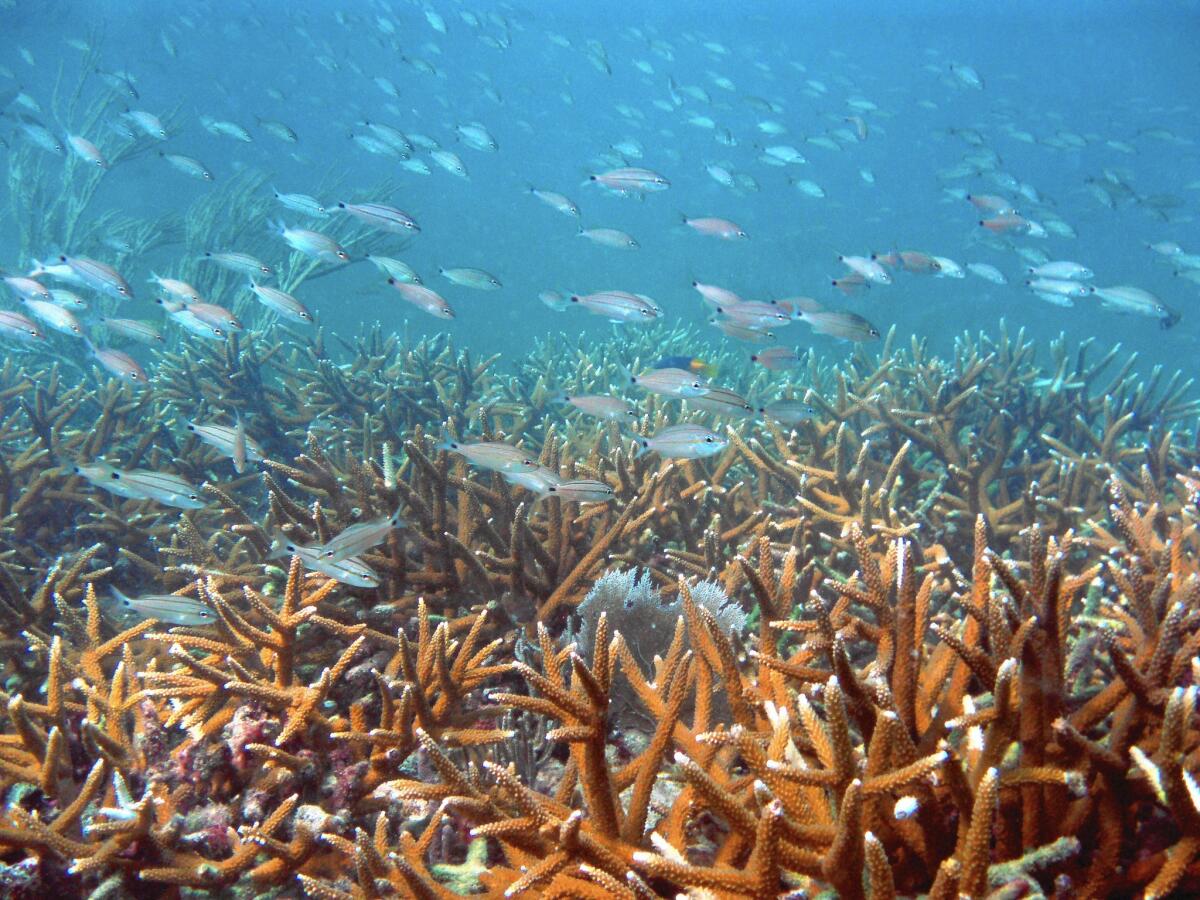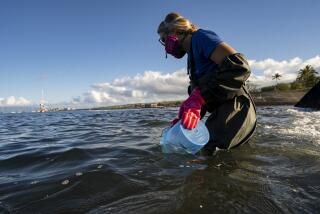Florida coral restoration may take $250 million, and 400 years

Here’s the estimated price for restoring two declining coral species found in South Florida and the Caribbean: about $250 million.
How long will it take? 400 years or so (assuming all goes smoothly).
No one expected it would be easy to restore elkhorn and staghorn corals, the once-abundant, reef-building species that since the 1970s have vanished from almost all of their old range. A recovery plan released this month by the National Marine Fisheries Service says the biggest current threat is climate change, a problem beyond its power to solve.
Assuming the oceans continue to warm, the plan recommends about two dozen steps to help these species survive. Among them: growing the corals in nurseries for transplantation to the ocean floor, tightening fishing regulations, identifying resilient genetic strains, and reducing the amount of fertilizer and other pollutants washing into the ocean.
“While the climate threats are the most significant, reducing the local threats will provide a buffer for the species to be able to deal with the climate threats,” said Jennifer Moore, a fisheries service biologist.
Often compared to tropical rainforests, coral reefs support a vast range of marine life, from sea anemones and sponges to angelfish and lemon sharks. They are among South Florida’s major tourist attractions, drawing visitors for fishing, diving and snorkeling, accounting for about $483 million in national recreation spending.
Elkhorn and staghorn corals, which can be found in the reefs that stretch from the Florida Keys through Palm Beach County on the state’s southeast coast, have been declining for at least 40 years from a variety of causes.
An outbreak of white-band disease wiped out about 80% of them in the early 1980s, Moore said. Rising ocean temperatures have made them more vulnerable to bleaching, in which they expel the colorful algae on which they depend for energy.
“Climate change is beginning to creep up in terms of causes,” Moore said. “The indications are that bleaching events will become more frequent and more severe due to climate change.”
The plan puts a price tag of $254,540,000 for recovery but admits it is “an extreme underestimate,” considering what other countries in the Caribbean also would have to spend.
Among the costs: basic research on their genetics, physiology and resistance to disease ($9.6 million), increasing land-based nurseries ($10 million per year), restocking sea urchins that clear algae from corals ($5 million) and improving sewage treatment in the U.S. and Caribbean ($10 million-$20 million).
No one expects this amount of money to be spent. The federal government this year has budgeted $500,000 to $800,000 for protecting coral, but Moore said not all the money would come from the federal government.
Coral grows extremely slowly, and some of the living coral reef structures off southeast Florida are hundreds of years old.
“The recovery team estimated that it will take approximately 400 years to achieve recovery based on the significant mitigative actions identified in this plan,” the plan states.
The next step for the fisheries service will be to set up implementation teams of governmental and environmental representatives, outside scientists and others with knowledge of the reefs. These teams, expected to be in place by September, should also be a means of leveraging money from other agencies, state and local governments and nonprofits, Moore said.
Meanwhile, the federal government is working on regulations to protect 20 other coral species found in the Pacific and Atlantic oceans.
More to Read
Start your day right
Sign up for Essential California for news, features and recommendations from the L.A. Times and beyond in your inbox six days a week.
You may occasionally receive promotional content from the Los Angeles Times.







